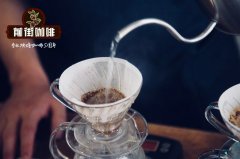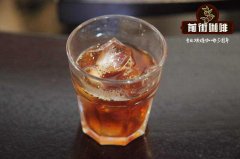How's the coffee from Rwanda? What kind of seed do you grow? What's the difference between washing and insolation?
How's the coffee from Rwanda? What kind of seed do you grow? What's the difference between washing and tanning?

Rwandan coffee is the most popular African coffee after Kenya and Ethiopia. But unlike the two famous countries, it does not have a long history of planting, let alone native varieties everywhere in the wild. This small African country is a fire Phoenix that has been reborn after robbery.
Rwanda (Rwanda), known as the Land of a Thousand Hills, sits above the equator and is surrounded by East African States such as Congo, Uganda, Tanzania and Burundi. Geographically, it has suitable conditions for growing coffee, but since it was introduced by German missionaries in 1904, Rwandan coffee has been poorly handled commercial grade, most of which have been exported to the sovereign country of Belgium. The promotion of boutique coffee production began only after the ravages of war and after the economy got back on track.
The genocide (Genocide) that occurred in 1994 killed more than 1 million people, most of them Tutsi (Tutsi). Up to now, there are orphans who survived those years on the streets of Rwanda, memorial halls that can be seen everywhere, and war criminals who account for 90% of the total number of prisoners! Since 2001, the Government of Rwanda has established NAEB (National Agriculture Export Development Board), which focuses on promoting coffee exports and earning foreign exchange.
With the support of the government, farmers have changed from rough home treatment to transporting freshly harvested fruit to a nearby water washing station (Coffee Washing Station) for full washing treatment. In a short period of 12 years, the number of washing stations across the country has increased from two to 220. It is now all private, that is, owned by exporters or farmers' cooperatives. As the average area of agricultural land is small (less than 200 coffee trees per farm), about 50 to 100 farms are served at each station. NAEB employs 200 botanists and cup surveyors to regularly check quality at washing stations and educate farmers about soil management, organic planting, pruning, disinfestation and picking.
Strictly control the speed of air drying
Bourbon accounts for more than 90% of Rwanda's production. A small number of farmers grow bourbon variants BM-139 and Jackson. There are more mountains in the south and west, and washing stations are also famous. For example, Gitesi, Huye Mountain, Mibirizi, etc. Compared with drying on concrete in Central America, Rwanda will cover parchment coffee with canvas on African oysters to control the rate of air drying and slowly reduce the water content of beans to 11% of the target in 10 to 15 days. Compared with sunlight exposure, this method helps to retain organic matter.
Rwanda is the first African country to host COE events. This is the fifth year. In taste, Rwanda coffee has obvious floral and fruity aromas, and tastes as smooth as tea. The balance is the highest in the United States of Africa. The author's participation in this year's competition and feelings will be discussed in a separate article.
Important Notice :
前街咖啡 FrontStreet Coffee has moved to new addredd:
FrontStreet Coffee Address: 315,Donghua East Road,GuangZhou
Tel:020 38364473
- Prev

Flavor trend of coffee growing environment in Uganda? How do you drink Ugandan coffee? Is it good?
The growing environment and flavor trend of Ugandan coffee? How do you drink Ugandan coffee? Is it good? Ugandan coffee beans are one of the most suitable coffee varieties for Italian coffee because of their delicate aroma and unique charm. Ugandan coffee beans have strict screening criteria, and every step is strictly screened in accordance with the standards of the international market, in order to ensure the high quality of coffee beans.
- Next

Does Kopi Luwak taste good? What's that smell? How to flush cat shit? Do you have an inside story?
Does Kopi Luwak taste good? What's that smell? How to flush cat shit? Do you have an inside story? Civet Coffee, also known as Kopi Luwak, is made from beans excreted by civets after eating coffee cherries. In addition to the high price, is there another reason to reject civet coffee? Investigators visited many civet coffee farms and villages in Indonesia and the Philippines. Indonesia and
Related
- Detailed explanation of Jadeite planting Land in Panamanian Jadeite Manor introduction to the grading system of Jadeite competitive bidding, Red bid, Green bid and Rose Summer
- Story of Coffee planting in Brenka region of Costa Rica Stonehenge Manor anaerobic heavy honey treatment of flavor mouth
- What's on the barrel of Blue Mountain Coffee beans?
- Can American coffee also pull flowers? How to use hot American style to pull out a good-looking pattern?
- Can you make a cold extract with coffee beans? What is the right proportion for cold-extracted coffee formula?
- Indonesian PWN Gold Mandrine Coffee Origin Features Flavor How to Chong? Mandolin coffee is American.
- A brief introduction to the flavor characteristics of Brazilian yellow bourbon coffee beans
- What is the effect of different water quality on the flavor of cold-extracted coffee? What kind of water is best for brewing coffee?
- Why do you think of Rose Summer whenever you mention Panamanian coffee?
- Introduction to the characteristics of authentic blue mountain coffee bean producing areas? What is the CIB Coffee Authority in Jamaica?

